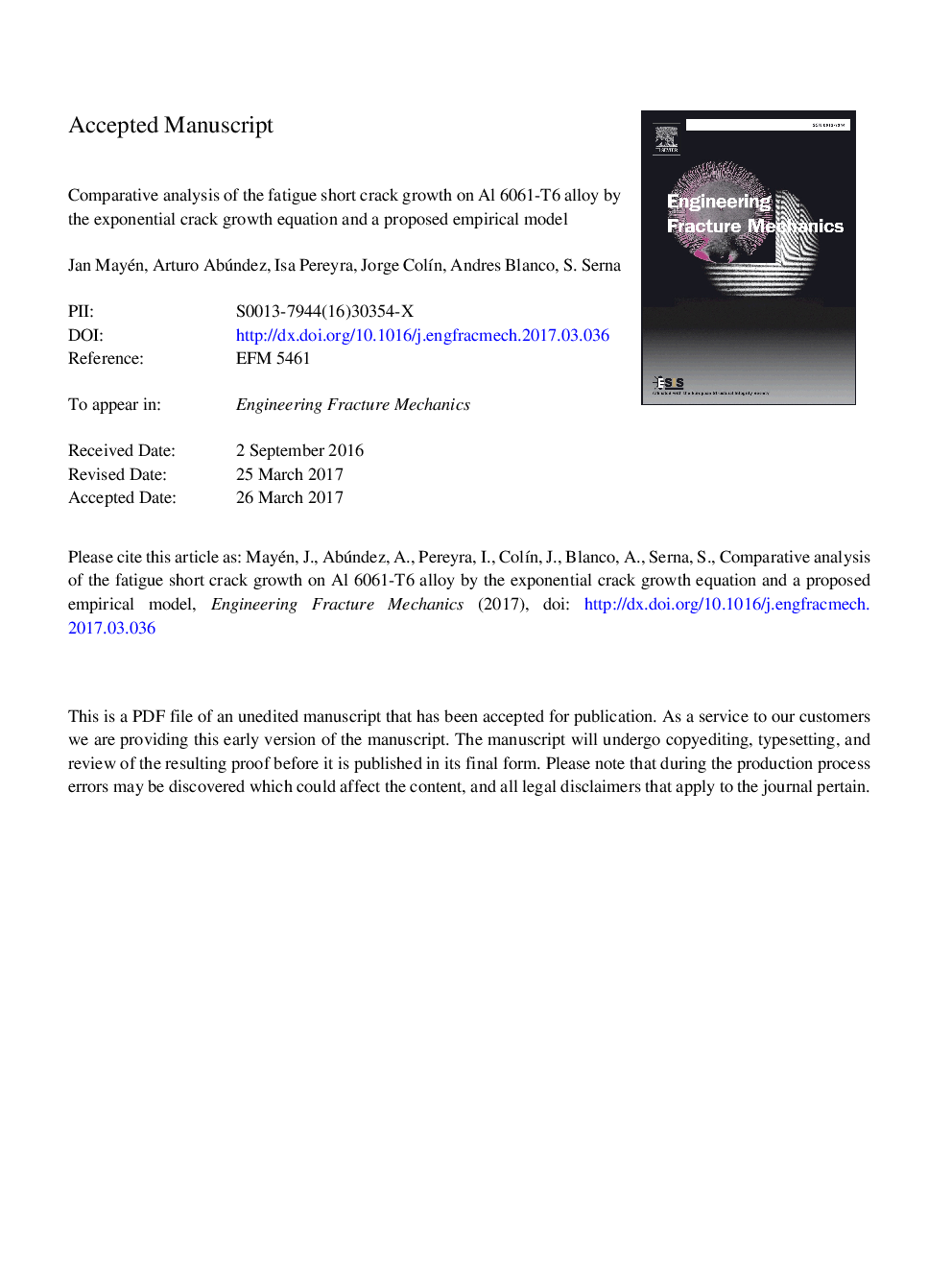| Article ID | Journal | Published Year | Pages | File Type |
|---|---|---|---|---|
| 5013964 | Engineering Fracture Mechanics | 2017 | 24 Pages |
Abstract
In this work, the short crack propagation and growth rate nonlinear behavior of an Al 6061 alloy in T6 condition, were assessed. The specimens were fatigue tested at 20 Hz in a rotating bending fatigue machine with constant amplitude loading of 88%, 61% and 38% of yield strength, and the short crack initiation and propagation were followed up using optical microscopy. The interaction between the surface cracks and aluminium microstructure were identified: persistent slip marks (PSMs) can be observed on the surface specimen, where persistent slip bands (PSBs) emerge from the surface as a result of accumulated damage by intrusion-extrusion mechanism, which eventually leads to the accumulation of dislocations within the grain as a consequence of grain border barriers and stress concentration at second phase particles. The recorded length crack paths were later analyzed to study the crack growth using the Frost and Dugdale exponential crack growth equation (ECG) and its comparison with a proposed model (PM) developed by multiple linear regression. The results showed that the crack growth rate is affected by microstructural features in the early growth stage, which is assumed to be from the nucleation up to 150 µm of crack length. The ECG is reliable only for the stage where the crack growth is mainly a consequence of stress concentration at crack tip; in contrast, the PM do properly describes the nonlinearity behavior between short and long crack growth.
Related Topics
Physical Sciences and Engineering
Engineering
Mechanical Engineering
Authors
Jan Mayén, Arturo Abúndez, Isa Pereyra, Jorge ColÃn, Andres Blanco, S. Serna,
